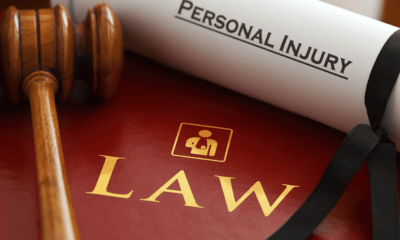Business
Allowance for Doubtful Accounts
Content
If a company operates across multiple global markets or industries, each category of customer will need to be evaluated separately to formulate a valid prediction. Bench gives you a dedicated bookkeeper supported by a team of knowledgeable small business experts.
The balance sheet aging of receivables method is more complicated than the other two methods, but it tends to produce more accurate results. If 6.67% sounds like a reasonable estimate for future uncollectible accounts, you would then create an allowance for bad debts equal to 6.67% of this year’s projected credit sales. Bad debt expenses are generally classified as a sales and general administrative expense and are found on the income statement. Recognizing bad debts leads to an offsetting reduction to accounts receivable on the balance sheet—though businesses retain the right to collect funds should the circumstances change. Most B2B businesses operate by extending trade credit to their customers for a fixed time period. Customers who don’t pay on time are categorized as doubtful accounts asunder.
Relax—run payroll in just 3 easy steps!
For example, say a company lists 100 customers who purchase on credit and the total amount owed is $1,000,000. The $1,000,000 will be reported on the balance sheet as accounts receivable. The purpose of the allowance for doubtful accounts is to estimate how many customers out of the 100 will not pay the full amount they owe. Rather than waiting to see exactly how payments work out, the company will debit a bad debt expense and credit allowance for doubtful accounts. ABC International has $100,000 of accounts receivable, of which it estimates that $5,000 will eventually become bad debts. It therefore charges $5,000 to the bad debt expense and a credit to the allowance for doubtful accounts .
Form 10-Q Bespoke Extracts, Inc. For: Jun 30 – StreetInsider.com
Form 10-Q Bespoke Extracts, Inc. For: Jun 30.
Posted: Fri, 19 Aug 2022 19:49:03 GMT [source]
Bad debt expenses make sure that your books reflect what’s actually happening in your business and that your business’ net income doesn’t appear higher than it actually is. Accurately recording bad debt expenses is crucial if you want to lower your tax bill and not pay taxes on profits you never earned.
Stay up to date on the latest accounting tips and training
The aggregate balance in the allowance for doubtful accounts after these two periods is $5,400. To illustrate, let’s assume that on December 31 a company had $100,000 in Accounts Receivable and its balance in Allowance for Doubtful Accounts was Allowance For Doubtful Accounts And Bad Debt Expenses a credit balance of $3,000. As a result, the December 31 balance sheet will be reporting that $97,000 will be turning to cash. During the first 30 days of January the company does not have any other information on bad accounts receivable.
A contra-asset decreases the dollar amount of the asset with which it is paired. In AFDA’s case, it is paired with accounts receivable and reduces its value on the balance sheet. Using the allowance for doubtful accounts enables you to create financial statements that offer a more accurate representation of your business. Recording the above journal entry will offset your current accounts receivable balance by $3,000. For example, if your current accounts receivable balance is $8,000, the actual value of the account would be $5,000. The risk classification method assumes that you have prior knowledge of the customer’s payment history, either through your initial credit analysis or by running a credit report. Analyzing the risk may give you some additional insight into which customers may default on payment.
Amount Reported as Allowance for Doubtful Accounts
It creates a credit memo for $1,500, which reduces the accounts receivable account by $1,500 and the allowance for doubtful accounts by $1,500. Thus, when ABC recognizes the actual bad debt, there is no impact on the income statement – only a reduction of the accounts receivable and allowance for doubtful accounts line items in the balance sheet . It is important to consider other issues in the treatment of bad debts. For example, when companies account for bad debt expenses in their financial statements, they will use an accrual-based method; however, they are required to use the direct write-off method on their income tax returns.
- Bad debt expenses make sure that your books reflect what’s actually happening in your business and that your business’ net income doesn’t appear higher than it actually is.
- The allowance for doubtful accounts method is an estimate of how much of the company’s accounts receivable will be uncollectible.
- For example, if 3% of your sales were uncollectible, set aside 3% of your sales in your ADA account.
- During the first 30 days of January the company does not have any other information on bad accounts receivable.
- Here the business assesses its past records and chooses an appropriate percentage of AR they expect to go unpaid.
- AR aging reports are complicated to compile and need input from a range of data sources.
For example, a report from D&B states that 76% of customers in the Mfg sheet metalwork industry pay on time, while this figure is only 46% for the equipment rental/leasing industry. So, the allowance will be lower for the metalwork industry and higher for the equipment rental industry. Using the allowance for doubtful accounts is particularly important to maintain financial statement accuracy, which should be important to any business owner, no matter how large or how small your business may be. The allowance for doubtful accounts is easily managed using any current accounting software application. For those of you using manual accounting journals, you’ll have to make appropriate entries to your journals to manage ADA totals properly. As a small business owner, you take a giant leap of faith every time you extend credit to your customers. Even with the most stringent analysis of a customer’s ability to pay, there’s going to be a time when a customer doesn’t pay what they owe.
Bad Debt and Doubtful Accounts – Explained
In other words, the higher the DSO of a company, the higher its allowance must be. The Pareto analysis method analyzes only large accounts that total up to 80% of the overall receivables. Businesses can then identify the most important and high-risk accounts and get an approximate idea of which customers might default. For the smaller accounts, the business then uses the historical percentage method. The Pareto analysis method is generally used by companies that have only a few large accounts. Allianz Trade can help companies that rely on bad debt reserves transition to the safer option, trade credit insurance.
Current guidelines limit users to a total of no more than 10 requests per second, regardless of the number of machines used to submit requests. Please declare your traffic by updating your user agent to include company specific information. Many or all of the products here are from our partners that pay us a commission.
The company would then reinstate the account that was initially written off on August 3. GAAP since the expense is recognized in a different period as when the revenue was earned. GAAP allows for this provision to mitigate the risk of volatility in share price movements caused by sudden changes on the balance sheet, which is the A/R balance in this context. Sales resulting from the use of Visa and MasterCard are considered cash sales by the retailer. The credit card issuer, who is independent of the retailer, the retailer, and the customer.
- When you create the credit memo, credit the accounts receivable account and debit either the bad debt expense account or the allowance for doubtful accounts .
- The business will also create a bad debt reserve – also known as an allowance for doubtful accounts – to reflect the estimation for uncollectible or bad debts.
- Upon receipt of credit card sales slips from a retailer, the bank that issued the card immediately adds the amount to the seller’s bank balance.
- The final point relates to companies with very little exposure to the possibility of bad debts, typically, entities that rarely offer credit to its customers.
- Now let’s say that a few weeks later, one of your customers tells you that they simply won’t be able to come up with $200 they owe you, and you want to write off their $200 account receivable.
- Popular variant of the receivables turnover ratio is to convert it into an average collection period in terms of days.
If a company has significant concentrations of credit risk, it is required to discuss this risk in the notes to its financial statements. Each of the major types of receivables should be identified in the balance sheet https://simple-accounting.org/ or in the notes to the financial statements. Occasionally the allowance account will have a debit balance prior to adjustment because write-offs during the year have exceededprevious provisions for bad debts.
The whole seller recommends the treatment to be done in books of accounts if he opts for the allowance method for recognizing bad debts. Most of its sales happen on credit with an estimated recovery period of 15 days. In this post, we’ll further define bad debt expenses, show you how to calculate and record them, and more. Read on for a complete explanation or use the links below to navigate to the section that best applies to your situation. As you can tell, there are a few moving parts when it comes to allowance for doubtful accounts journal entries. To make things easier to understand, let’s go over an example of bad debt reserve entry. In the example above, we estimated an arbitrary number for the allowance for doubtful accounts.

Business
Carpet Flooring: Transform Your Space with Comfort and Style

Carpet flooring remains a favorite choice for both homes and businesses. Why? Because it makes spaces feel warm, inviting, and cozy. Carpets aren’t just about looks—they add comfort, help save energy, and can completely change the vibe of a room. This guide aims to give you everything you need to know about choosing, installing, and caring for carpet flooring. Whether you’re dreaming of a soft bedroom carpet or a durable option for high-traffic areas, I’ve got you covered.
Understanding Carpet Flooring
What Is Carpet Flooring?
Carpet flooring is a soft covering made of fibers woven into fabric. Its main parts include the pile (the surface fibers), backing (the foundation), and fibers (materials like nylon, polyester, or wool). The fibers give carpets their texture and appearance. Modern carpets come in various materials, each offering different qualities, from wool’s natural softness to nylon’s toughness.
History and Evolution of Carpet Flooring
Carpets have been around for thousands of years, originally crafted by hand from animal hides or plant fibers. Over time, manufacturing became more advanced, making carpets more durable and diverse. Today, we have endless patterns, colors, and textures, thanks to technology. Innovations like stain-resistant fibers and eco-friendly materials have made carpets both practical and stylish.
Types of Carpet Flooring
Broadloom vs. Carpet Tiles:
Broadloom carpets are large rolls, typically measuring 12-15 feet wide, suited for smooth, seamless looks.
Carpet tiles are smaller squares or rectangles, easy to install and replace. They work well in commercial spaces or areas prone to damage.
Loop Pile, Cut Pile, and Combination Pile:
Loop pile carpets have uncut fibers looped into the backing, making them strong and good for high traffic.
Cut pile carpets have fibers cut at the surface, offering a plush feel, perfect for bedrooms.
Combination pile uses both, combining durability with softness for versatile use.
Benefits of Carpet Flooring
Comfort and Aesthetics
Nothing beats the softness of a carpet underfoot. It adds a warm, plush look that instantly makes a room more inviting. Plus, circular patterns and bold textures let you customize your space easily.
Insulation and Energy Efficiency
Carpets act like a blanket, trapping heat and reducing drafts. Studies show that they can save up to 10% on heating bills. Additionally, they absorb sound, making rooms quieter and more peaceful.
Safety and Maintenance
Carpets create a cushioned surface, reducing slips and falls—especially important in households with children or elderly people. Modern fibers also resist stains and are simple to clean, making upkeep manageable.
Cost-Effectiveness
Compared to hardwood or tile, carpets usually cost less to buy and install. Plus, their friedly long haul means they last many years with proper care, giving you good value for money.
Selecting the Right Carpet Flooring
Factors to Consider
Think about how much foot traffic the room gets. High-traffic zones need durable carpets, while bedrooms can have softer, plush options. Budget plays a big role, too. Match your style with colors and patterns that fit your decor—bright, neutral, or bold.
Popular Carpet Styles and Their Best Uses
Plush Carpets:
Ideal for bedrooms and living rooms; they offer a smooth, luxurious feel.
Berber and Loop Carpets:
Perfect for busy hallways or offices because they hide dirt and withstand wear well.
Shag Carpets:
Great for adding a dramatic look; they’re soft and cozy, perfect for casual spaces.
Expert Recommendations
Interior designers suggest choosing carpets with a high rating for durability if you want them to last. Certified options, like those with Green Label Plus, are eco-friendly and healthier for indoor air quality.
Installing Carpet Flooring
Preparation and Planning
Start with a clean, level subfloor. Remove old flooring and check for any damage. Measure the room accurately to order enough material—it’s better to have a little extra than come up short.
Installation Process
The process involves cutting the carpet to size, laying down adhesive or using tack strips, and stretching the carpet tight across the floor. Finally, trimming the edges and sealing seams completes the look.
Cost Considerations
Expect to pay anywhere from $3 to $10 per square foot, depending on the type of carpet. Don’t forget additional costs for padding, transition strips, or repairs. Professional installation might add to the price but ensures a smooth, long-lasting fit.
Maintenance and Longevity of Carpet Flooring
Daily and Weekly Care
Vacuum regularly—at least once a week—to keep dirt at bay. Attend to spills immediately with gentle blotting and mild cleaners. Avoid rubbing to prevent fiber damage.
Deep Cleaning and Professional Care
Schedule steam cleaning every 12-18 months for best results. Professional services remove deep dirt and allergens, extending your carpet’s lifespan.
Extending Carpet Life
Use rugs or mats in high-traffic areas to reduce wear. Move furniture periodically to prevent indentations, and keep doors open for good airflow. With proper care, carpets can serve you well for 10-15 years.
Troubleshooting Common Issues
Watch out for fiber crushing, stubborn stains, or mold caused by excess moisture. Small repairs or patching can fix minor tears. When carpets become worn or stained beyond repair, it’s time for a replacement.
Purchasing Tips for Carpet Flooring
Shopping Strategies
Compare several stores or websites to find the best quality and price. Look for certifications like Green Label Plus to ensure eco-friendliness. Ask about warranties to protect your investment.
Sustainable and Eco-Friendly Options
Choose carpets made from recycled fibers or low VOC adhesives. These choices are better for the environment and improve indoor air quality, especially in homes with kids or pets.
Best Places to Buy Carpet Flooring
Local flooring stores often provide expert advice and hands-on assistance. Big-box retailers can be budget-friendly, but online options sometimes offer more variety. Skilled staff can help you select the perfect product for your needs.
Conclusion
Carpet flooring offers comfort, style, and energy savings that few other options match. Taking the time to choose the right type, style, and installation method ensures long-term satisfaction. With proper care and maintenance, your carpet becomes a cozy foundation that enhances your space’s look and feel. When shopping, prioritize durability and personal style—your perfect carpet awaits.
Credit:
High Plains Flooring & Blinds
6614 Camden Blvd, Fountain, CO 80817
Hours:
Mon-Fri: 9am – 5pm
Sat: 9am – 1pm, Sun: Closed
Find us on the Maps:
g
Business
Cheap Doesn’t Mean Cheap Looking: Affordable Hardwood Floors Trends

Many people think that good-looking hardwood floors have to come with a high price tag. They believe that affordable options will look cheap or outdated. But that isn’t always true. You can find stylish, durable, and affordable hardwood flooring that turns any room into a high-end space.
Today, more trends are making inexpensive hardwood look luxury. Without breaking the bank, you can still get floors that impress.
Understanding the Perception of Cheap-Looking Hardwood Floors
The stigma around inexpensive flooring
Some think that cheap hardwood always means low quality. They see it as dull, thin, or poorly finished. This makes many hesitate to pick affordable options, worried about resale value or style. It’s a common myth that lower costs come with lower class.
How quality is measured
What makes hardwood high quality? Usually, it’s about thickness, finish, and grain type. Thicker planks last longer and handle wear better. A smooth, high-quality finish looks better and lasts longer. The type of wood grain can also make a big difference. Careful craftsmanship and good materials show off quality, even in affordable floors.
Affordable Hardwood Floor Trends
Trend 1: Wide Planks for a Modern Look
Wide planks are trending now because they give a room a spacious, sleek feel. These larger boards look more expensive and are often cheaper per square foot. They are easier to install and come in many finishes. Sourcing wider planks from local suppliers can save money too.
Trend 2: Reclaimed and Recycled Wood
Reclaimed wood is popular not only because it’s eco-friendly but also because it looks authentic and stylish. Every piece has character, knots, and a weathered charm that high-end flooring can’t match. Plus, using recycled wood often costs less than new, premium hardwood.
Trend 3: Natural, Neutral Color Palettes
Colors like soft browns, greys, and beige are in. These shades make floors look more upscale because they match any decor. Neutral tones also hide dirt better and create a timeless style. It’s easier to update accessories if your flooring stays simple and elegant.
Trend 4: Textured and Hand-Scraped Finishes
Texture adds depth and disguises scratches or dents. Hand-scraped or wire-brushed finishes give a crafted look without the price of custom work. Many affordable engineered hardwoods now come with these textures, saving you money while adding style.
Trend 5: Innovative, Budget-Friendly Materials
Engineered hardwood options have come a long way. They look very real, with detailed grain patterns and matte finishes. Even laminate or hybrid floors mimic the appearance of natural wood perfectly. These materials cost less but can give your space a high-end feel.

Also read: Secrets to Cleaning Your Home in Half the Time
Tips for Achieving Luxurious Looks on a Budget
Choosing the Right Grade and Finish
Select flooring grades that mimic premium styles. Premium-looking finishes like matte or satin add elegance. You don’t need the top-tier grade to get a rich look — just choose carefully and focus on finish quality.
Proper Installation Techniques
A good installation makes all the difference. Hiring a professional ensures a neat, seamless appearance. If you do it yourself, pay attention to leveling and spacing. Small efforts in installation can make affordable floors look custom and luxury.
Maintenance and Upkeep
Keeping your floors clean is key. Regular sweeping and gentle cleaning extend their life and keep them looking fresh. Avoid harsh chemicals, and use mats to trap dirt. Well-maintained floors look more expensive and last longer, even if they cost less initially.
Real-World Examples of Affordable Hardwood Success
Case Study 1: Chic Urban Apartments
A city apartment used budget-friendly engineered hardwood with a wide plank design. The result? A modern, spacious look that rivaled much more expensive choices. Reclaimed wood accents added character without extra cost.
Case Study 2: Suburban Home Renovation
A family renovated their home on a tight budget. They chose neutral, textured floors with hand-scraped finishes. Proper installation and regular care brought a touch of luxury that impressed even friends and visitors.
Expert Opinions
Many flooring specialists confirm that affordable doesn’t mean low class. Interior designers often mix budget options with high-end accessories to create stunning spaces. They say focus on finish quality, texture, and color for a luxurious look.
Conclusion
Affordable hardwood flooring can look just as classy as high-end options when you pick the right styles and techniques. Trends like wide planks, reclaimed wood, and textured finishes are making budget floors more appealing.
By focusing on quality sourcing, smart design choices, and good upkeep, you can get flooring that feels luxurious without overspending. Remember, style isn’t about cost — it’s about how you choose and care for what you have. So, don’t shy away from budget-friendly hardwood. Instead, let these trends inspire your next home upgrade.
Reference:
ARTISTIC FLOORING
Whether you’re looking for the best flooring options, need a quote, or want to schedule a free flooring consultation, we’re just a call or click away.
artisticflooringva@gmail.com
Find Us
3200 Dam Neck Road Suite #110
Virginia Beach, VA 23453
Business
Why do Businesses Need Human resource Consulting Services?

Human resource consulting firms play a vital role in today’s business landscape. They offer several key benefits and importance to organizations:
Expertise and Specialization:
HR consultants bring specialized knowledge and expertise to the table. They stay up-to-date with the latest HR trends, best practices, and legal regulations. This expertise is precious for businesses without dedicated HR staff or require support in complex HR areas.
Cost-Effective Solutions:
Engaging HR consultants can often be more cost-effective than hiring and maintaining an in-house HR department. Businesses can access high-quality HR services as needed, reducing fixed labor costs.
Customization:
HR consultants tailor their services to meet the specific needs of each client. Whether recruitment, employee training, or policy development, consultants design solutions that align with the organization’s unique goals and challenges.
Objective Perspective:
Consultants offer an objective and impartial perspective on HR matters. They can provide insights and recommendations without being influenced by internal biases or politics, which can be valuable for making difficult HR decisions.
Efficiency and Productivity:
HR consultants can streamline HR processes, making them more efficient. This can improve productivity, as employees spend less time on administrative tasks and more on strategic activities.
Compliance and Risk Management:
HR consultants help organizations comply with labor laws and regulations, reducing the risk of legal issues, fines, and reputational damage. They also assist in implementing best practices for risk management.
Strategic Focus:
Organizations can free up their internal resources by outsourcing HR tasks to consultants to focus on core business activities and strategic initiatives. This can lead to improved business performance and growth.
Scalability:
HR consulting firms can adapt to an organization’s changing needs. Whether a business is expanding, downsizing, or facing other transitions, consultants can provide flexible HR solutions to support these changes.
Access to Technology:
Many HR consulting firms have access to advanced HR technology and software solutions that may be cost-prohibitive for smaller organizations to implement independently. This technology can enhance HR processes and data management.
Talent Acquisition and Development:
HR consultants excel in talent acquisition and development. They can help organizations attract top talent, assess employee potential, and implement training and development programs to improve workforce skills.
Confidentiality:
HR consultants are bound by confidentiality agreements, ensuring that sensitive HR issues and employee data are handled with discretion and professionalism.
Conflict Resolution:
Consultants can mediate and assist in resolving workplace conflicts and issues, promoting a harmonious work environment.
Global Expertise:
For businesses with international operations, HR consultants with global expertise can help navigate the complexities of international HR regulations and practices.
In summary, human resources consulting firms provide valuable support to organizations by offering expertise, cost-effective solutions, and a strategic approach to managing their workforce.
Their ability to adapt to changing needs, ensure compliance, and improve HR processes makes them an essential resource for businesses looking to thrive in today’s competitive environment.

 Entertainment5 years ago
Entertainment5 years agoBruce Dickinson is seen with fitness coach Leana Dolci
- Business4 years ago
PNC Bank Customers Can Now Send Money Using Email or Mobile Phone

 Entertainment8 months ago
Entertainment8 months agoGina Stewart Hottest Grandma poses completely naked

 Business3 years ago
Business3 years agoPayPal quietly reintroduces $2,500 “misinformation” fine

 Entertainment3 years ago
Entertainment3 years agoCheck Out the WPC16 Schedule Today!

 Entertainment5 years ago
Entertainment5 years agoGorgeous 12 year old girl with 50,000 Instagram followers

 Entertainment5 years ago
Entertainment5 years agoAshley James hits back at cruel trolls who tell her to ‘just stop’ after she shares a video of her ‘big boobs’ being taped for a film event
- Business5 years ago
Брокер для скальпинга ECN счет форекс это лучшее для скальпа











































